Undoubtedly one of the best places to visit in Ireland, Dublin is full of world-famous museums, designer boutiques, lovely parks, and much more. Whether you’re doing Dublin in a weekend or you are just stopping off for a few days on your backpacking trip through Europe, this itinerary will take you through the best of Dublin. But first, here’s some helpful tips about Ireland’s capital city…
What You’ll Find in this Article
- How to Get From the Airport to Dublin
- Best Time to Visit Dublin
- Where to Stay in Dublin
- The Perfect 3-Day Dublin Itinerary
How to Get from the Airport to Dublin
Dublin Airport is only about 6 miles or 10 kilometers away from the city center, and there’s no shortage of taxi cabs or buses that can take you from the airport to the city center.
In terms of convenience and price, there are only two options I would recommend…
1. Aircoach – Private Coach Bus
This bus (route 700) runs 24/7 every day except Christmas. It goes towards Leopardstown and can get you to Trinity College/Grafton Street in around 30 minutes. It also makes stops at popular locations like O’Connell Street and Drumcondra.
You can buy a bus ticket from the booth right outside the terminal. Prices change based on where you’re going. Assuming you’ll be staying in the city center, a single adult ticket is €7.00, and a return adult ticket €12.00.
2. Airlink – Public Coach Bus
There are two Airlink buses that stop at Dublin Airport – 747 and 757.
- Bus 747 goes as far as Heuston Station and makes stops at places like O’Connell Street, Temple Bar & College Green, Christ Church Cathedral, and High Street.
- Bus 757 goes to Camden (Charlotte Way) and stops at places like Hawkins Street & Temple Bar, the Convention Centre Dublin, and St. Stephen’s Green.
The fare is the same as for the Aircoach buses and can be purchased in advance here.
You can also purchase and use the Leap Visitor Card on these buses. The Leap Visitor Card allows you unlimited travel for a certain number of days on Dublin Bus (including Airlink), Luas (tram), and DART & Commuter Rail services.
Know, however, that the city center is very walkable and that the Leap Visitor Card only makes sense if you’re not a big fan of walking. This Dublin itinerary can either be done on foot, by bus, or a combination of both.
When To Visit Dublin
The hottest temperatures and the most tourists come in the summer months between June and August. During these months attractions can be crowded and prices for accommodation are higher.
January and February are typically the coldest months. Every once in a while the temperatures get below freezing and you’ll see snow, but it’s not super common.
In my personal opinion the best time to visit Dublin is in the spring and autumn months because you’ll have pretty good temperatures without all the summer tourist crowds and high prices.
Not matter the time you visit, be prepared to experience a variety of weather during your 3 days in Dublin. Rain and sun come and go, and you should be prepared with a quality rain jacket or travel umbrella.
Where To Stay in Dublin
With everything from luxury hotels to budget-friendly hostels, Dublin has something for you regardless of your budget.
Located in the heart of the city and overlooking St Stephen’s Green, the luxurious Shelbourne Hotel is THE place to be in order to receive five-star treatment and be within walking distance of Dublin’s greatest attractions.
A solid mid-range option is Jurys Inn Dublin Christchurch, which puts you just opposite of Christ Church Cathedral and right near all the action. Airbnb is also a good option, with tons beautiful vacation rentals in Dublin to choose from.
If you’re all about location, but are traveling on a backpacker’s budget, Barnacles Temple Bar House is located in the Temple Bar area, guaranteeing you’ll have the time of your life without busting your budget.
For a more quieter hostel stay, check out Jacobs Inn. This hostel is within 100 meters of Dublin’s main bus terminal as well as a Luas light rail stop, and you’ll still be less than a 10-minute walk from the action.
For more accommodation options in Dublin check out Booking.com. They continuously offer the best rates and their custom service is on point.
The Perfect 3-Day Dublin Itinerary
With so much going on, it can be super difficult to figure out what to do in Dublin in 3 days. But no worries. We’ve incorporated world-class museums, amazing parks, historic sites, and more, to make sure your time in Dublin is the best it can be.
However, before we get to our Dublin itinerary, we just wanted to remind you to purchase travel insurance. You never know what will happen and, trust us, you do not want to get stuck with thousands of dollars in medical bills. As a wise man once said, “If you can’t afford travel insurance, you can’t afford to travel.” So don’t leave home without it.
SafetyWing offers travel insurance for only about $10 a week, making it a no-brainer to get. You can get a quick, non-binding quote below:

SafetyWing is, of course, not the only option available. Two other popular alternatives are World Nomads and Heymondo.
So without further ado, here are the best places to visit in Dublin in three days.
Dublin Itinerary: Day 1
On your first day in Dublin you’ll explore some of the city’s classics from the castle to the famous Temple Bar area.
Dublin Castle
Built on the site of a Viking settlement in the early 13th century, Dublin Castle was originally created as a defensive fortification and is now one of Dublin’s most popular attractions.
In addition to the castle, the complex contains the crypt of the Chapel Royal, Chester Beatty Library, and Garda Museum and Archives (a police museum).
The castle welcomes more than 250,000 guests per year, and has been visited by celebrities like Nelson Mandela, Queen Elizabeth II, Charles de Gaulle, John F. Kennedy, and Queen Victoria. Bram Stoker, the author of Dracula, even worked here from 1866 – 1878.
The castle complex is open to the public every day from 9:45am – 5:45pm, with the exception of December 25 – 27, January 1, and during certain state functions.
A 70-minute guided tour costs €10.00 for adults and will take you through the State Apartments, the Chapel Royal, and the Viking Excavation.
For €7.00 you can take a self-guided tour through the State Apartments and exhibitions. You can use the audio guide available through their free app as well as a brochure on the State Apartments to act as your guide.
You can purchase your tickets on their website or on-site at the reception desk in the upper courtyard.
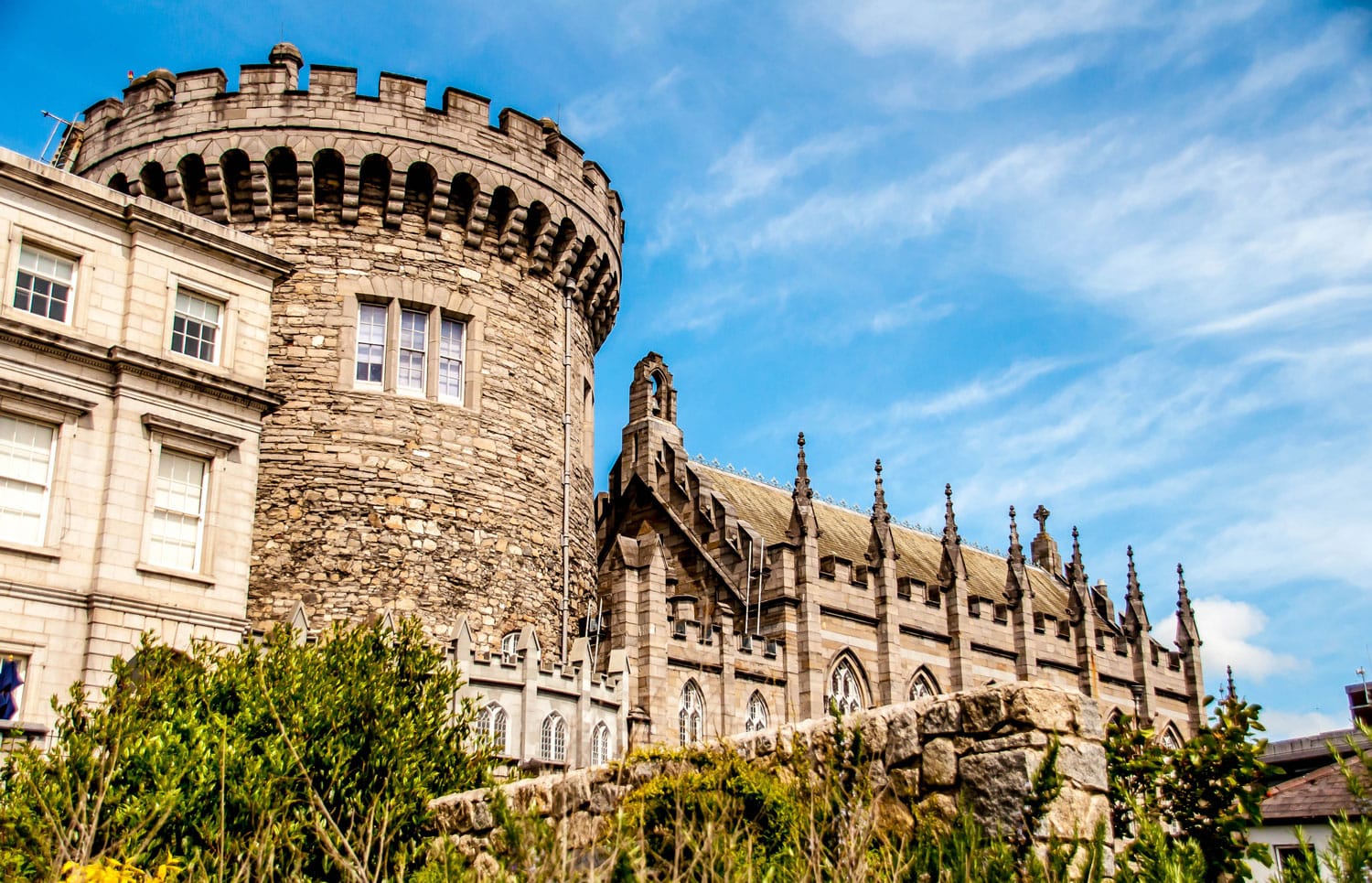
Christ Church Cathedral
Less than a five-minute walk from the castle is the world-famous Christ Church Cathedral.
Founded around 1028, this Gothic/Romanesque cathedral is the oldest medieval cathedral in Dublin. The interior is absolutely stunning, with the highlight being the crypt, as it’s the largest in the country and the earliest surviving structure in the city.
To learn as much as possible about this historic building, take the guided tour. It’s a 45-minute tour that costs €11.00 per adult. On the guided tour you can see the belfry (and ring the renowned Christ Church bells), the crypt, and the nave.
If you’re only interested in seeing the crypt and the ‘Treasures of Christ Church’ exhibition, then you can take a self-guided tour for €7.00.
Closing times change based on the season, but the cathedral opens at 9:30am Monday through Saturday and at 12:30pm on Sundays.
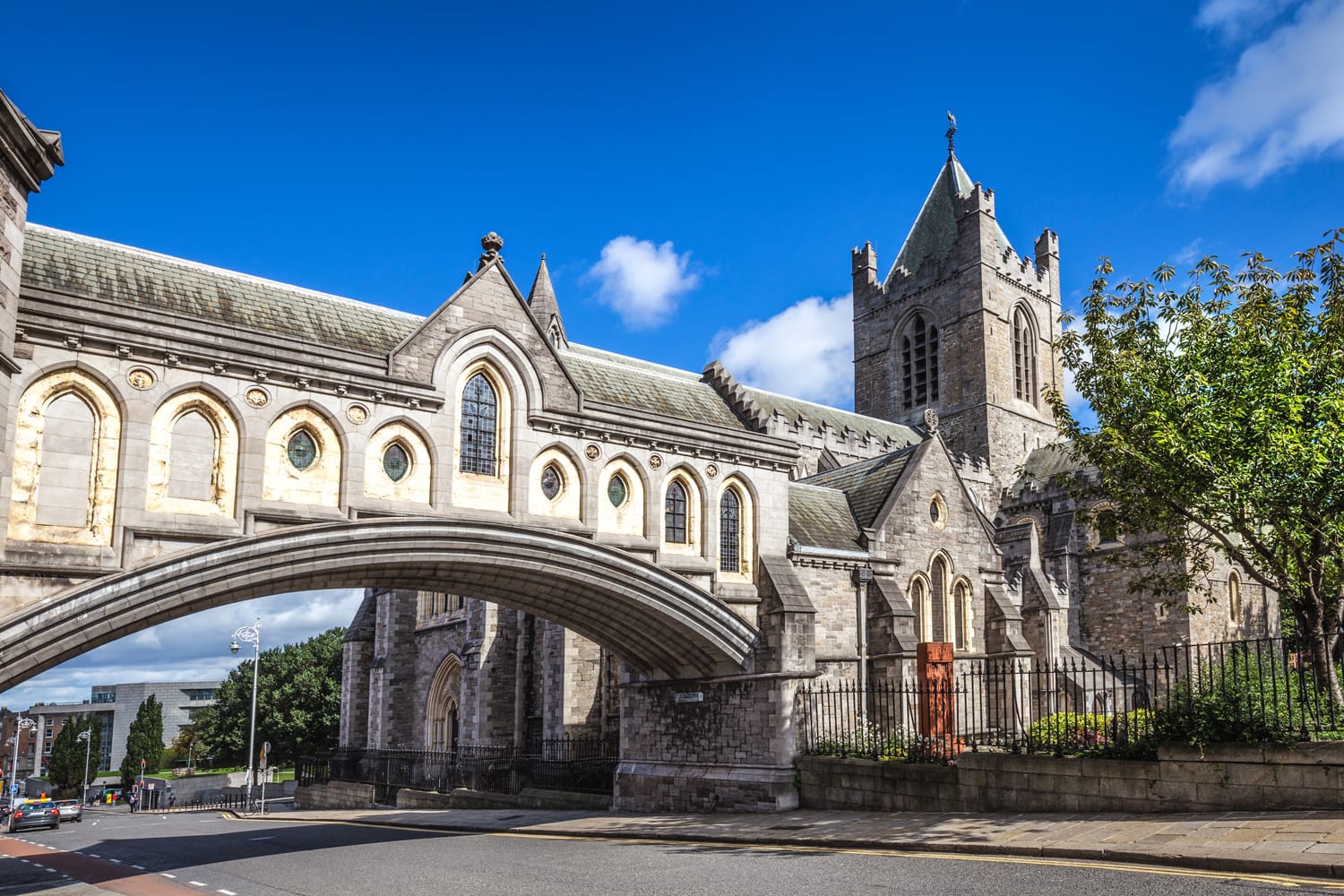
Dublinia
This historical recreation museum is housed in a part of the Christ Church Cathedral called the Synod hall. It’s a fun museum focused on Dublin’s Viking and Medieval history.
Along with the historical reenactments, you’ll have the opportunity to see a medieval view of this modern city, explore the life of a history hunter, and much more.
Adult tickets cost €9.50, and they do offer free tours included in the cost of admission every day at 2:30pm. If you don’t want to take the tour, it’ll probably take you around 90 minutes to get through the museum.
Dublinia opens every day (with the exception of December 24-26) at 10:00am. From March – September the museum closes at 6:30pm and from October – February it closes at 5:30pm.
If you know you’ll be exploring Dublinia and Christ Church Cathedral, go to Dublinia’s welcome desk first to get a discounted combo ticket.
Molly Malone Statue
If you’re Irish or you’ve seen the Disney Channel movie The Luck of the Irish, it’s likely that you’ve heard the song “Molly Malone”. Even though there’s no evidence she was a real person, you’ll find tons of people gathered around the statue trying to get a picture.
There was also a pretty cool street performer next to the statue when I visited.
The statue is about a ten-minute walk from Dublinia.
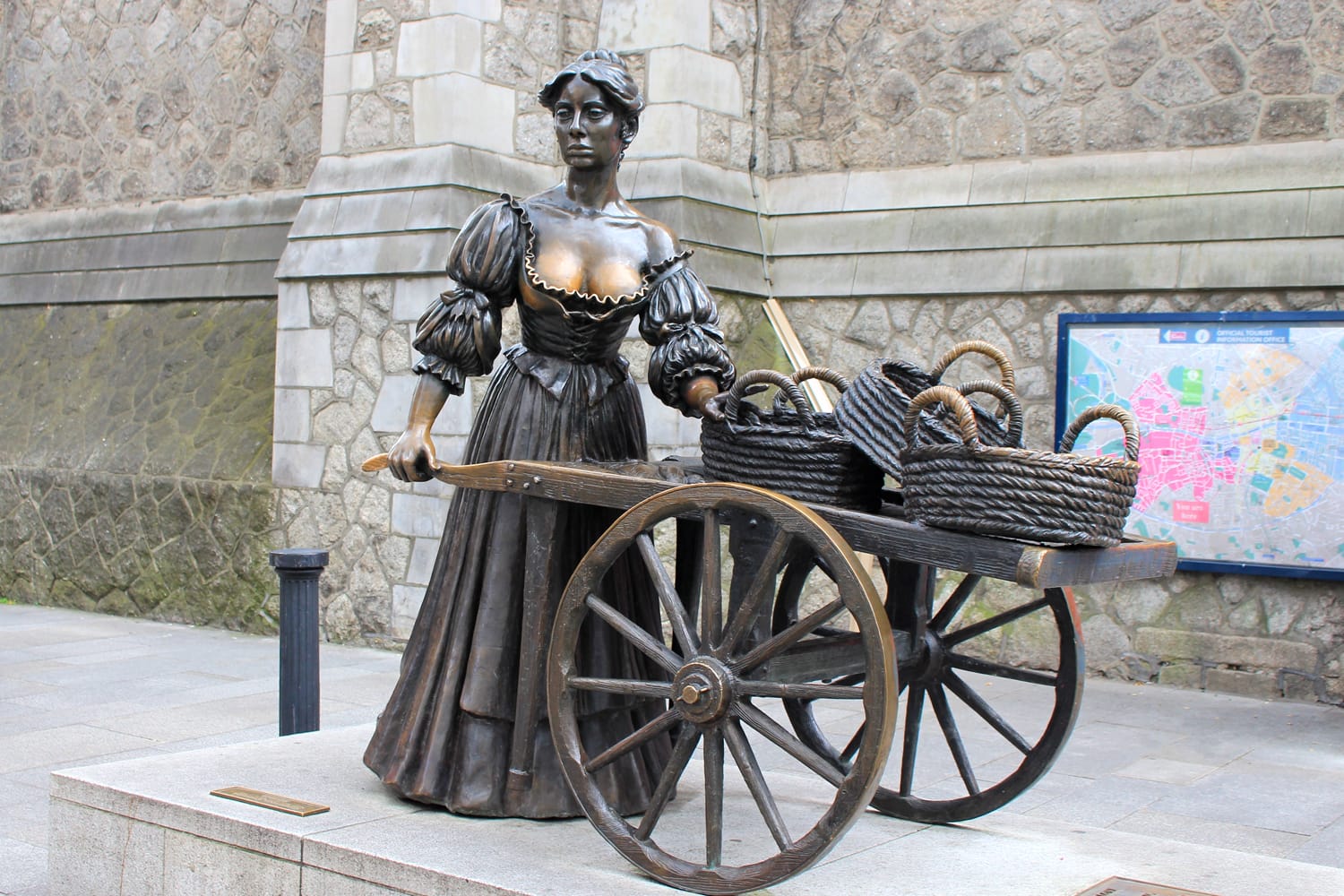
Ha’Penny Bridge (Sunset over the River Liffey)
A five-minute walk from the Molly Malone statue is the famous Ha’Penny Bridge.
Previously requiring people to pay a “halfpenny” in order to cross, the oldest pedestrian bridge crossing over the River Liffey was built in May of 1816.
This is one of the best places in the city to take pictures and to watch the sunset. There are plenty of restaurants and shops on either side of the bridge where you can have a delicious lunch or dinner.
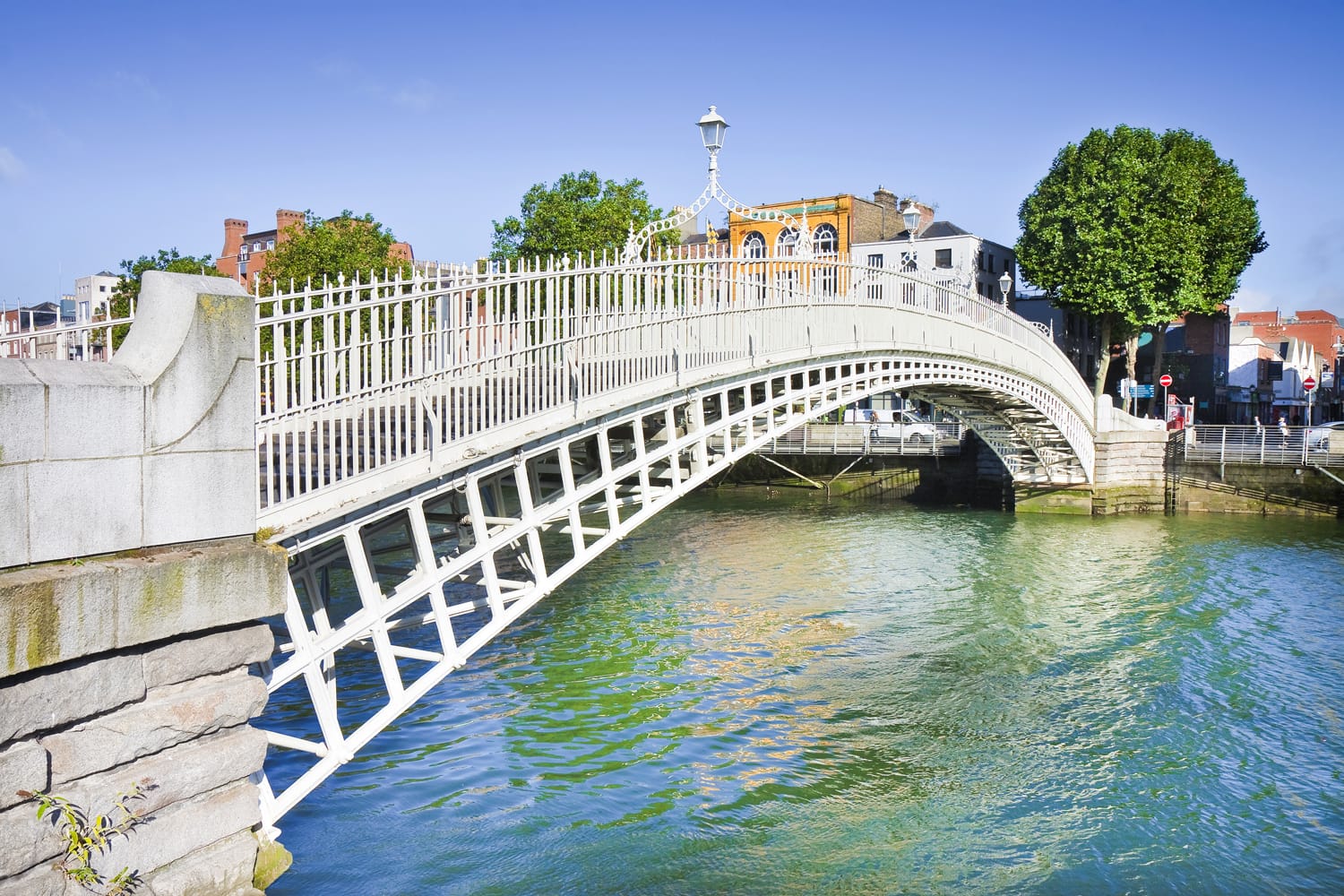
Temple Bar
It’s only a two-minute walk from Dublin’s most famous bridge to Dublin’s most famous nightlife district, Temple Bar.
Here you’ll find plenty of lively nightclubs, traditional Irish bars, unique shops, and interesting cafes.
You’ve never experienced anything like the energy in Temple Bar. So relax, order a cold Guinness in one of the many traditional Irish pubs, and enjoy your long weekend in Dublin.
Some of the most popular pubs are The Temple Bar and The Brazen Head, Ireland’s oldest pub.

Dublin Itinerary: Day 2
Learn some interesting history about the city and do a little bit of shopping on your second day in the Irish capital city.
Trinity College
Officially the “College of the Holy and Undivided Trinity of Queen Elizabeth near Dublin”, we have Queen Elizabeth I to thank for this historic university. Dating back more than four centuries, Ireland’s oldest operating university and the only constituent college of the University of Dublin is known for its academic excellence.
The most popular attractions within the university are the Old Library and the Book of Kells exhibitions.
The 213-foot-long Long Room is the main chamber of the Old Library. Within the Long Room you’ll find one of the last existing copies of the 1916 Proclamation of the Irish Republic, the 14th or 15th-century Brian Boru’s harp (one of the oldest surviving Gaelic harps), and 200,000 of the library’s oldest books.
The Book of Kells is a world-famous gospel manuscript written in Latin from the 9th century. Along with the Bible’s four Gospels of the life of Jesus Christ (Matthew, Mark, Luke, and John), there are also various texts and tables to see. It’s highly regarded as the world’s most famous medieval manuscript and Ireland’s greatest cultural treasure.
€14.00 gets you access to both exhibitions along with a 35-minute tour of the four major squares of Trinity College. If you’d like a guided tour without visiting the exhibitions, you’ll only pay €6.00. For more information, visit their website.
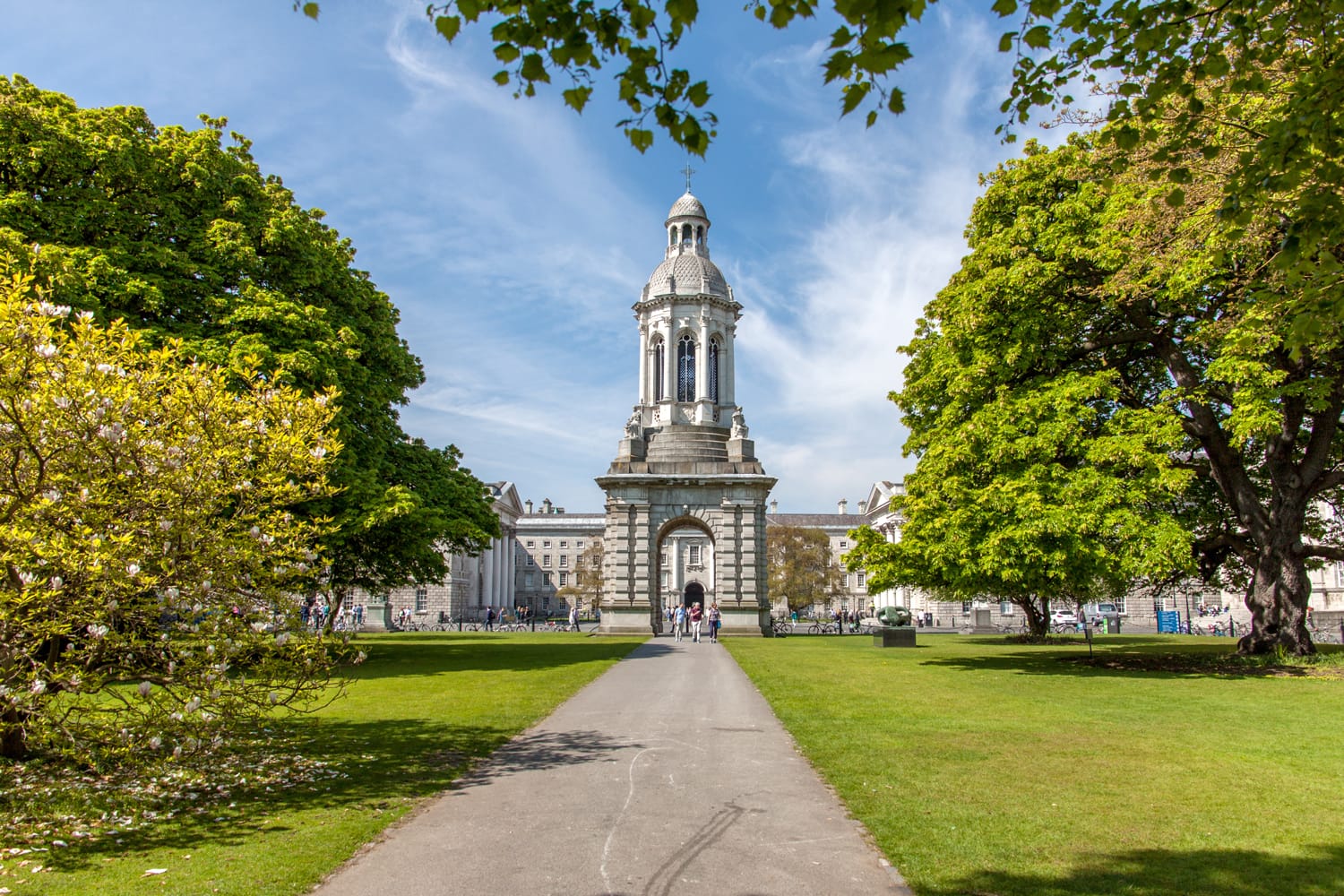
National Museum or Gallery of Ireland
Less than a ten-minute walk from Trinity College are three of Dublin’s greatest museums. Each of the three museums are free and unique in their own way. I’d give yourself about two hours for each museum, depending on how much you like to stop and read the displays.
- National Museum of Ireland – Archaeology: Some of the coolest objects from Ireland and around the world are housed here. Inside you’ll see a world-famous collection of medieval ecclesiastical objects and jewellery, western Europe’s greatest collection of prehistoric gold artifacts, impressive examples of metalwork from the Celtic Iron Age, and much more.
- National Museum of Ireland – Natural History: This cabinet-style museum teaches you about everything from mammals throughout the world to Irish fauna (insects, birds, sea life, etc.). There are plenty of entertaining activities along with geological samples and zoological models.
- National Gallery of Ireland: This gallery is home to an impressive collection of European art dating from the 14th to the 20th century. The collection boasts around 5,000 drawings, 5,000 prints, 2,500 oil paintings, and a host of furniture, sculptures, and other works of art that brings the total number of pieces to around 14,000.
St. Stephen’s Green
Less than a ten-minute walk from the museum will be St. Stephen’s Green. This Victorian park is one of Dublin’s largest at 22 acres. There are plenty of walkways along with sculptures, a children’s playground, and even a waterfall.
If you’re interested you can download a free audio guide that will take you through ten stops in the park in just over an hour. It goes back a few hundred years in Dublin’s history and you’ll stop at interesting places like the granite Fusiliers’ Arch.
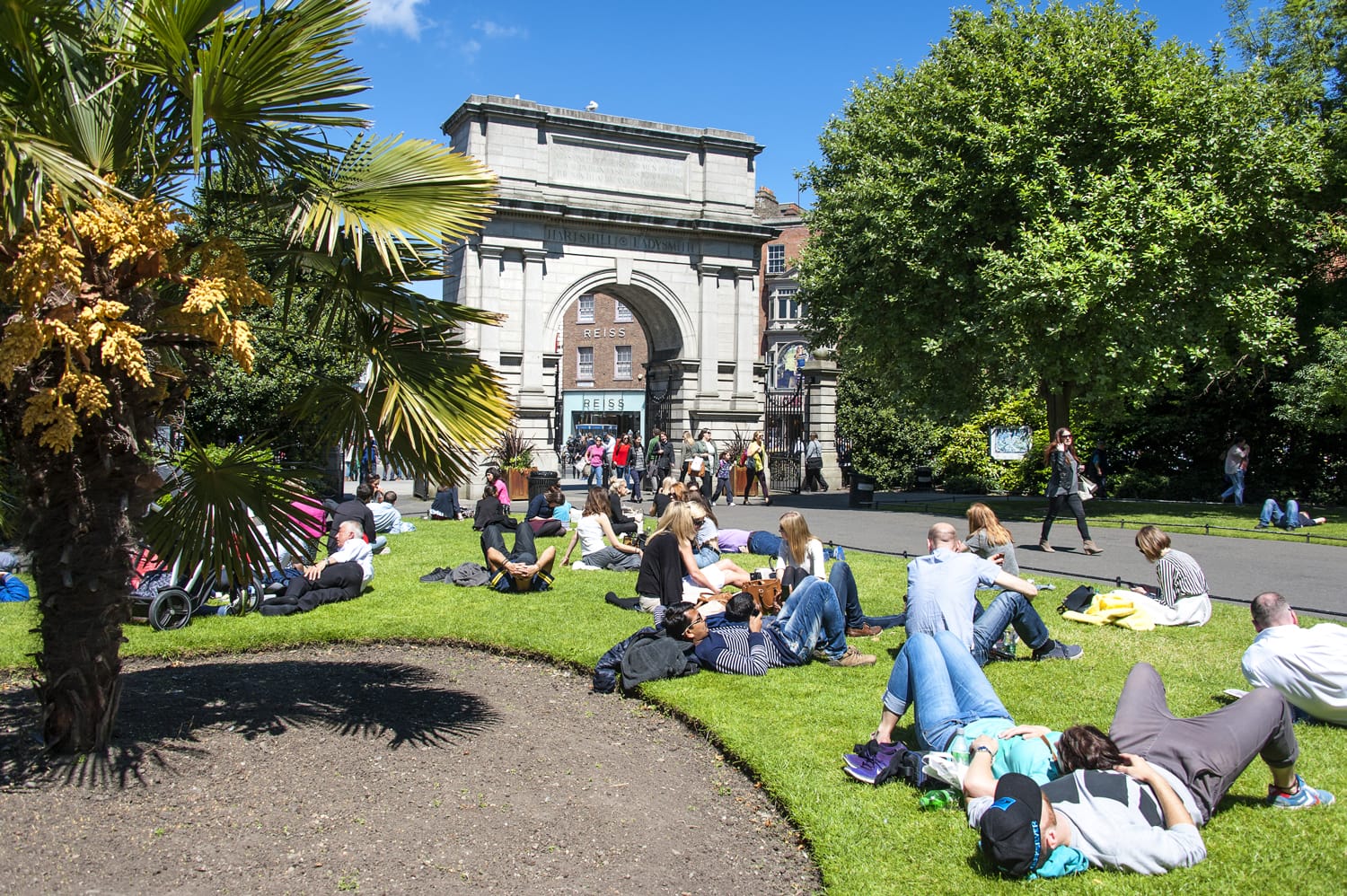
Little Museum of Dublin
Less than 50 feet away from the park is a lovely people’s museum. This museum tells the story of 20th-century life in the Irish capital.
The Georgian townhouse has more than 5,000 artifacts spanning three floors. Some of the exhibitions are devoted to events like the visit by United States President John F. Kennedy and the Easter Rising.
If you’re not a member of the museum, the only way to tour the Little Museum of Dublin is by paying €10.00 for a 30-minute guided tour.
Their tours have been known to sell out, so if you’re interested you may want to book your ticket in advance here.
Nominated for European Museum of the Year Award, if you’re wondering what to see in Dublin in 3 days, this should be near the top of your list.
Stephen’s Green Shopping Centre
Once you leave the Little Museum of Dublin, you’ll get to Stephen’s Green Shopping Centre in less than five minutes.
Ireland’s first premium shopping center is an architectural gem that you’ll love, even if shopping isn’t your thing. The glass and iron structure is topped by an impressive glass dome, and the orange brickwork gives it a historic feel while also blending it in with the surrounding Georgian and Victorian architecture.
With more than 100 stores and several places to eat, you really can shop until you drop here…or until 9:00pm on Thursdays, 6:00pm on Sundays, and 7:00pm every other day of the week :)

Grafton Street
Right outside the mall is one of Dublin’s main shopping streets, Grafton Street. It runs from St. Stephen’s Green to College Green, and once the shops close for the evening, the restaurants and pubs come to life.
You can choose to only do dinner then get a good night’s sleep or you can party all night long. There’s more than enough fun to be had on Grafton Street.
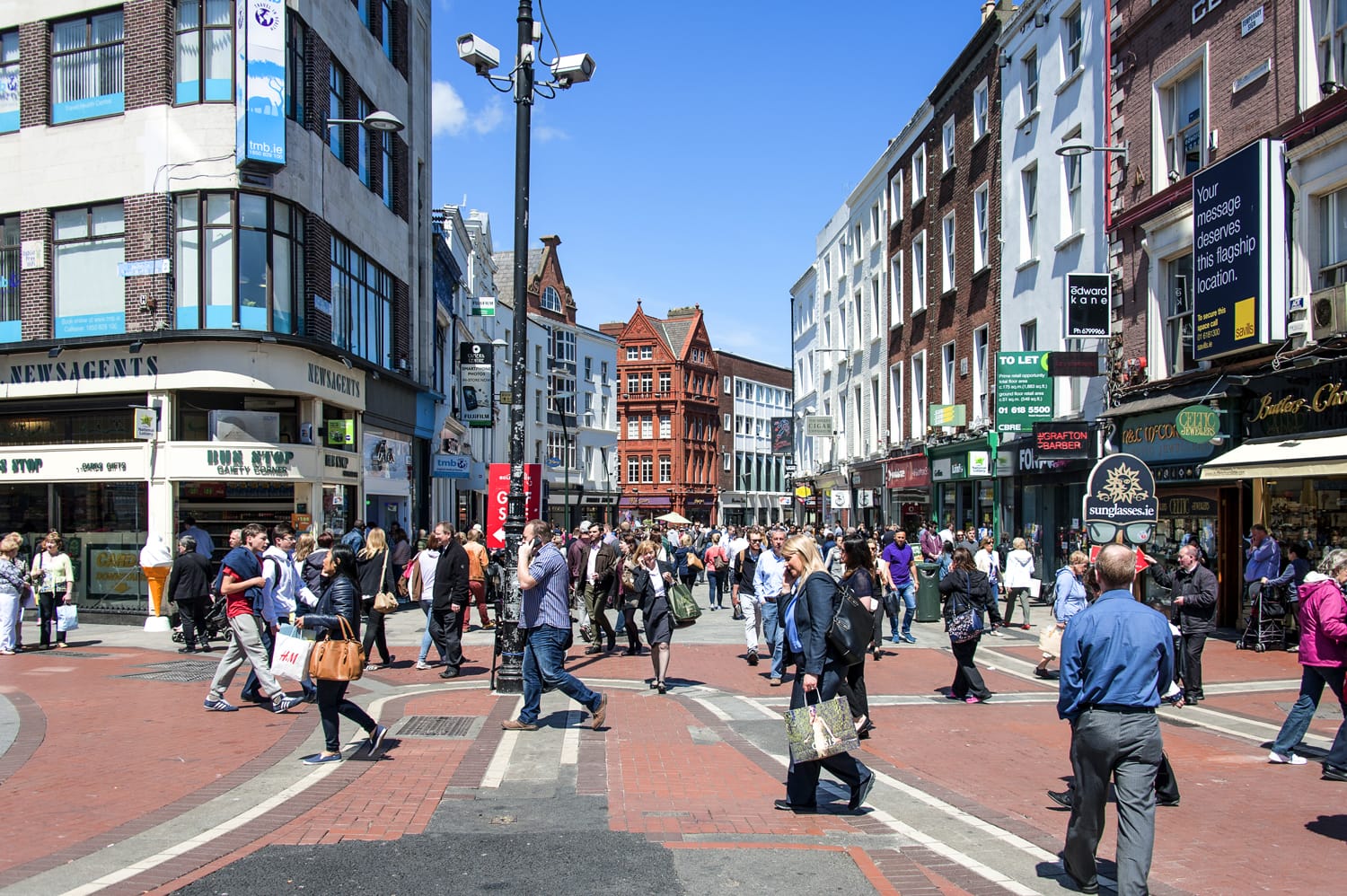
Dublin Itinerary: Day 3
We hope you’re thirsty because we’ve saved Dublin’s most popular attraction for your final day here. Couple that with some of Dublin’s most unique experiences, and you’ve got yourself a day you’ll never forget.
Kilmainham Gaol
This former prison turned museum is one of the most interesting things you’ll see during your time here. The British imprisoned and executed several Irish revolutionaries here, but it also held thousands of ordinary people.
It’s a big symbol of the tradition of militant and constitutional nationalism from the rebellion of 1798 to the Irish Civil War of 1922-1923.
The only way to see this site is by booking a guided 60-minute tour. Tickets on-site are €9.00, but you can get them for less if you book online. Their tours frequently sell out too. To make sure you stay on schedule, it’s probably a good idea to book your ticket in advance.
The museum opens every day (with the exception of December 24-26) at 9:00am, and closes between 5:00pm and 7:00pm based on the month.
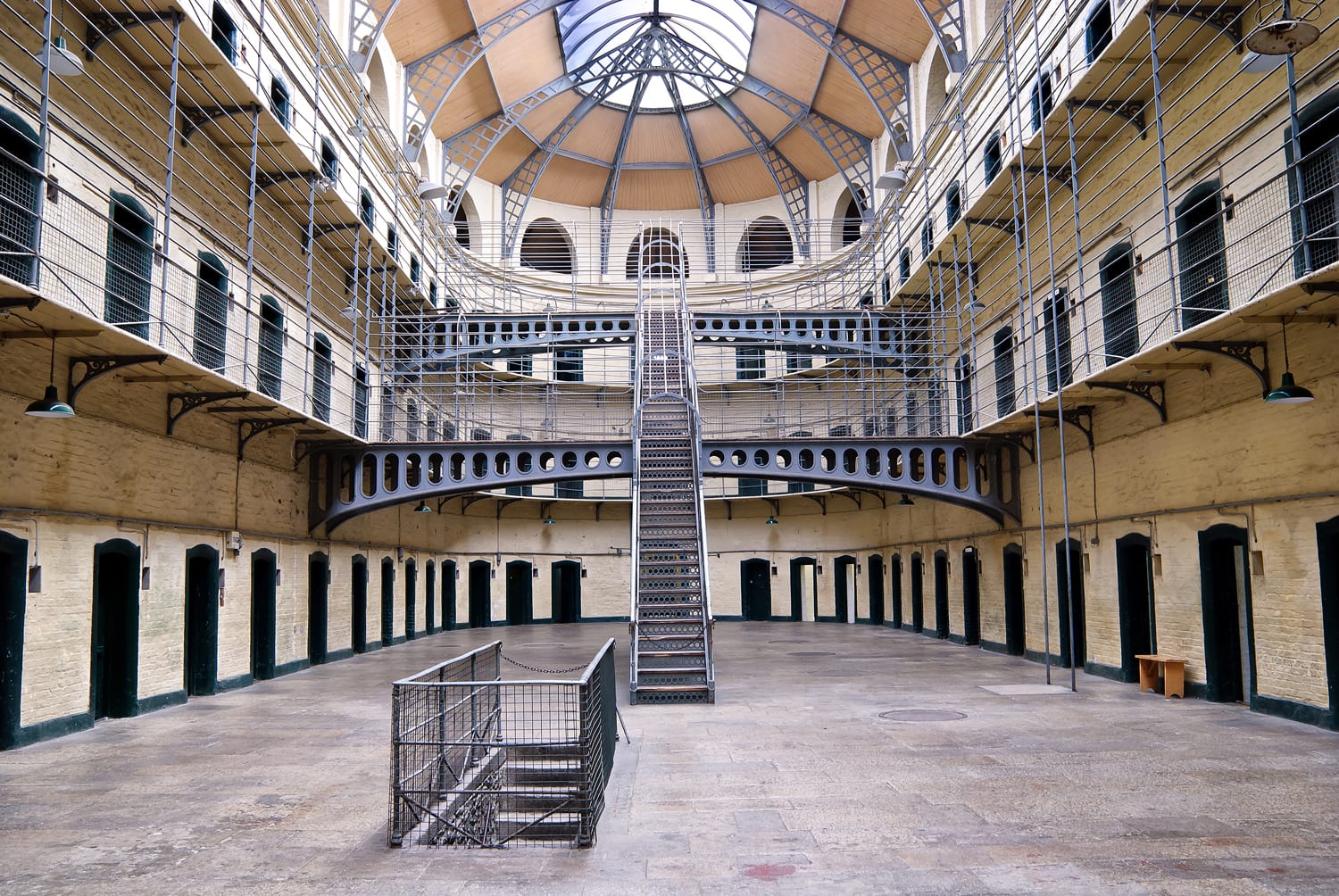
Guinness Storehouse
Dublin’s most popular tourist attraction hardly needs an introduction.
You’ll begin at the bottom of the world’s largest pint glass. Next you’ll encounter seven floors of interactive experiences that teach you about their brewing heritage and Ireland’s history. Once you get to the top you’ll get enjoy a complimentary pint from the world-renowned rooftop Gravity Bar.
Typically, it takes people around 90 minutes to explore, but you can stay for as long as you’d like. After your self-guided tour there are plenty of restaurants, bars, or cafes on-site for you to enjoy.
Adult tickets start at €18.50, and it’s recommended that you book your tickets online in advance.
With the exception of St. Stephen’s Day, Christmas Eve, and Christmas Day, the Guinness Storehouse is open every day from 9:30am – 7:00pm.
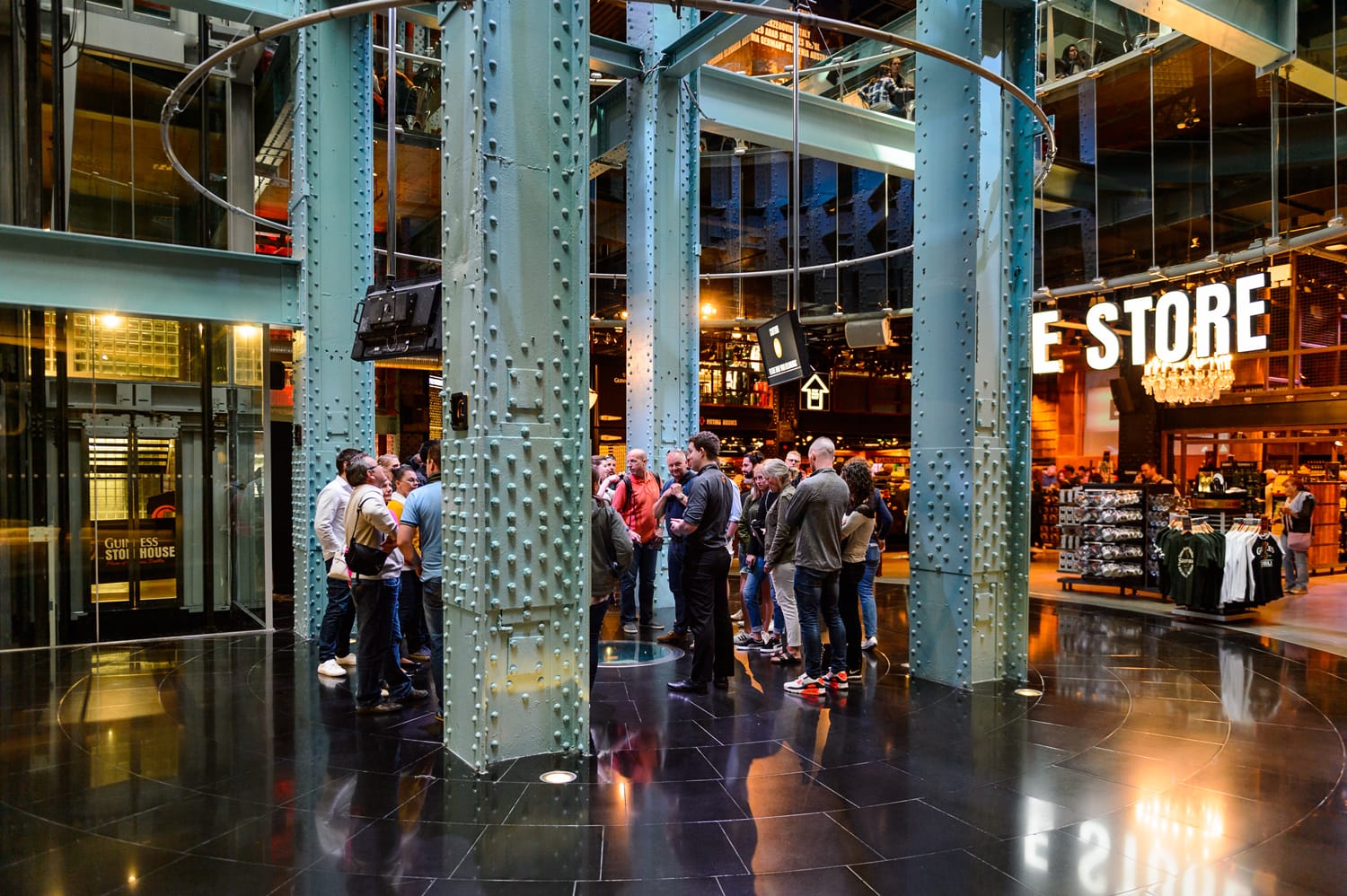
Jameson Distillery Bow St.
This stop is optional and can either been done instead of the Guinness Storehouse or afterwards, depending on how much time you have.
The Jameson Distillery is where Jameson Irish Whiskey was distilled until 1971. There are five different whiskey experiences you can take advantage of, from a 40-minute guided tour where you’ll enjoy a comparative whiskey tasting to a 90-minute whiskey blending class where you can take home your own blended whiskey.
Tickets for a guided tour start around €20.00, but sometimes they offer discounted rates when you book on their website.
The opening hours are from 10:00am – 6:00pm Sunday through Thursday, and from 10:00am – 7:00pm Friday and Saturday.
O’Connell Street
Once you’re ready to have dinner, head to O’Connell Street. Dublin’s main thoroughfare is a 15-20-minute walk or a ten-minute Luas ride from Jameson Distillery Bow St.
Several monuments line the street, and it won’t be hard to find places to eat, drink, and dance the night away.
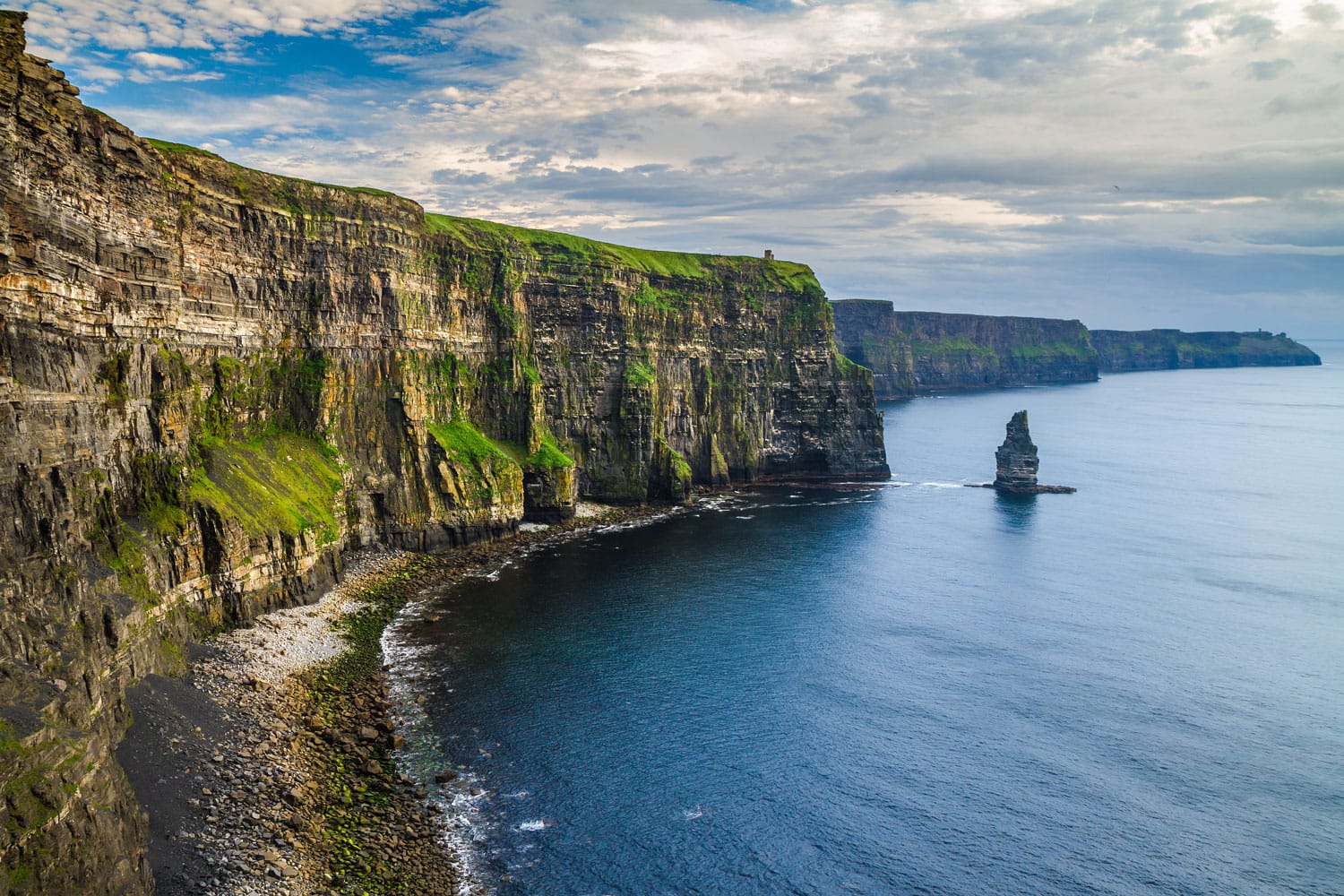
Dublin Itinerary: Day 4 and Beyond
If you have more than three days in Dublin, consider adding a day trip to your Dublin itinerary. Some of the best day trips from Dublin are:
- Giant’s Causeway
- Cliffs of Moher, Burren & Galway
- Wicklow Mountains & Glendalough
- Newgrange & Hill of Tara
- Malahide Castle & Howth
And there you have it – the best things to do in Dublin in 3 days. Whether you’re into history, museums, architecture, or culture, Dublin is a city you’ll love from the time you land until the time you leave.

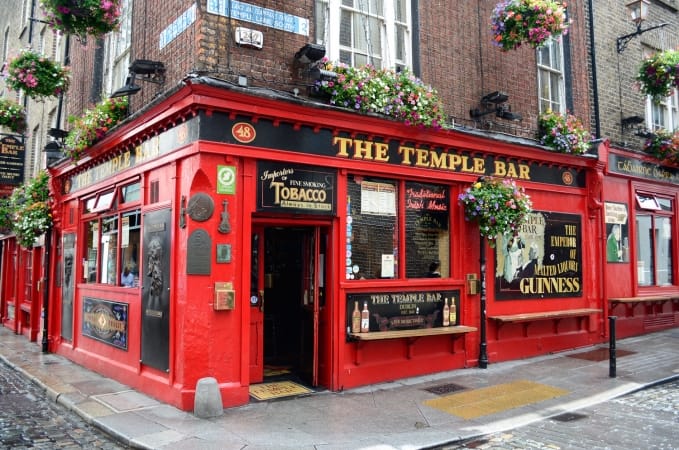


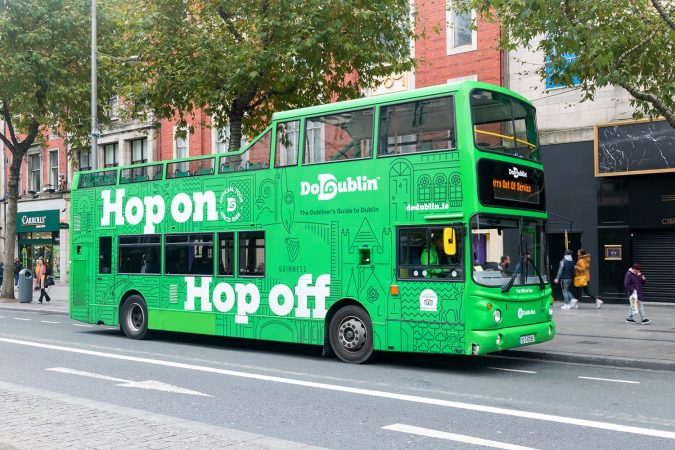
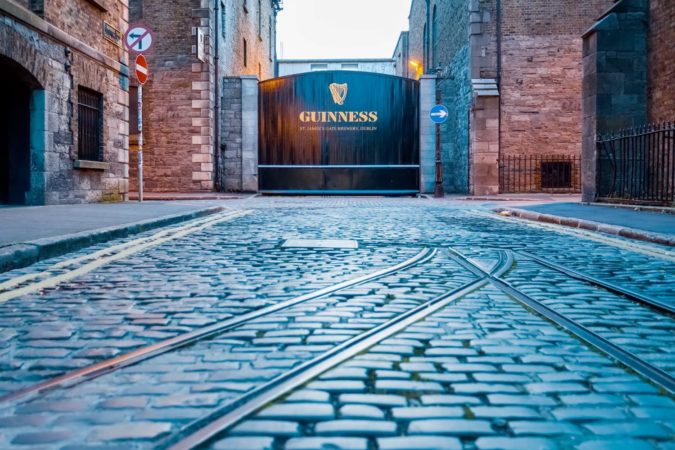
Comments